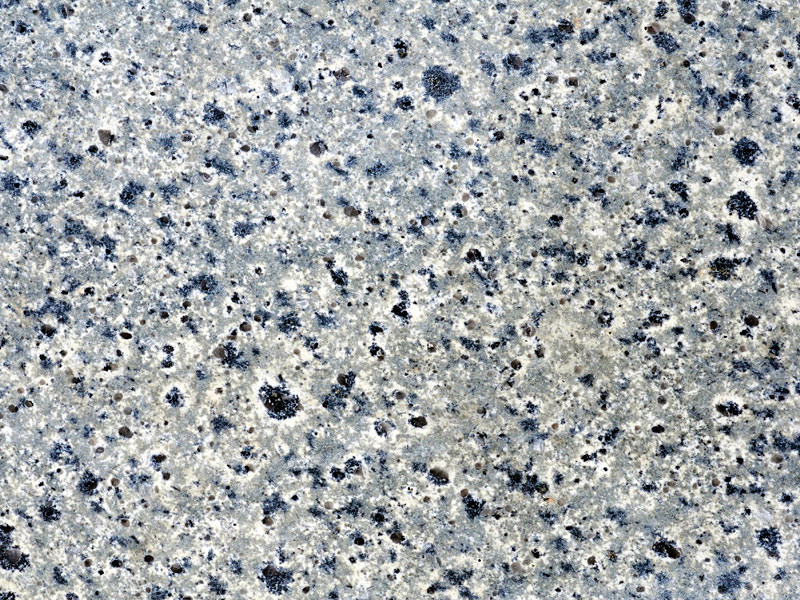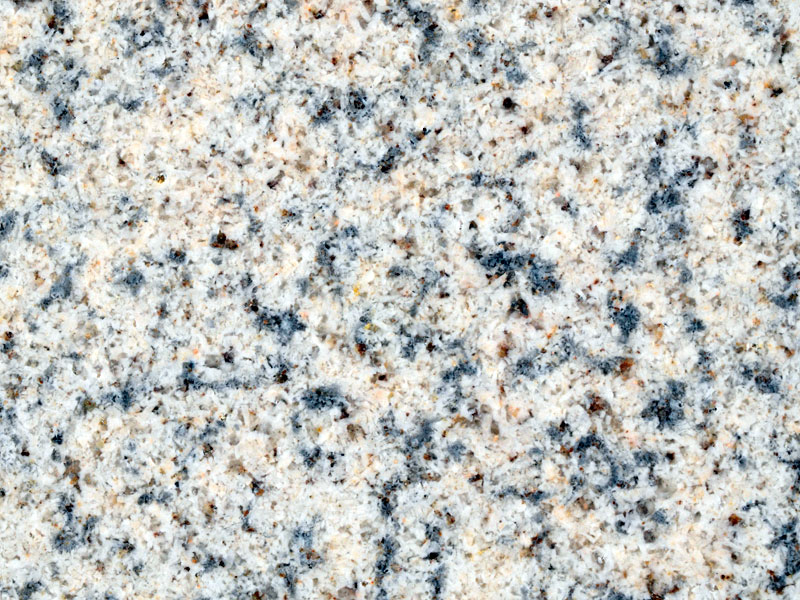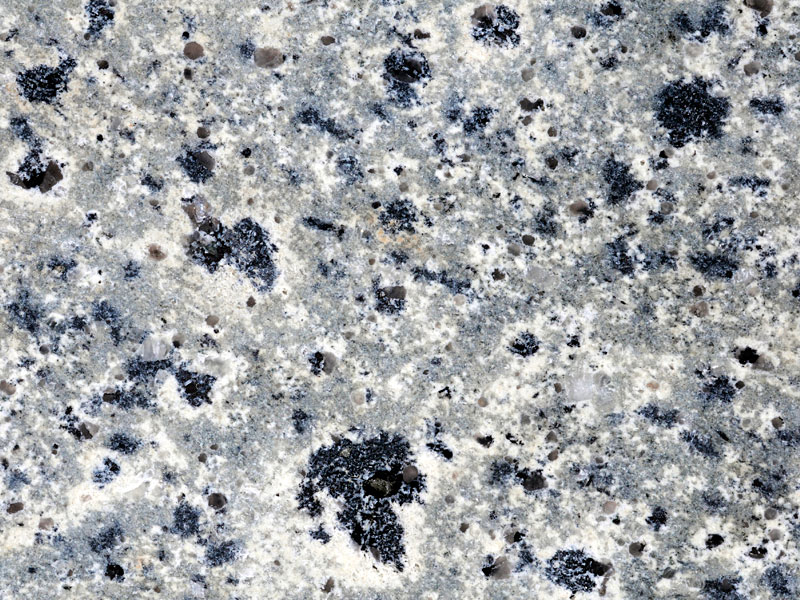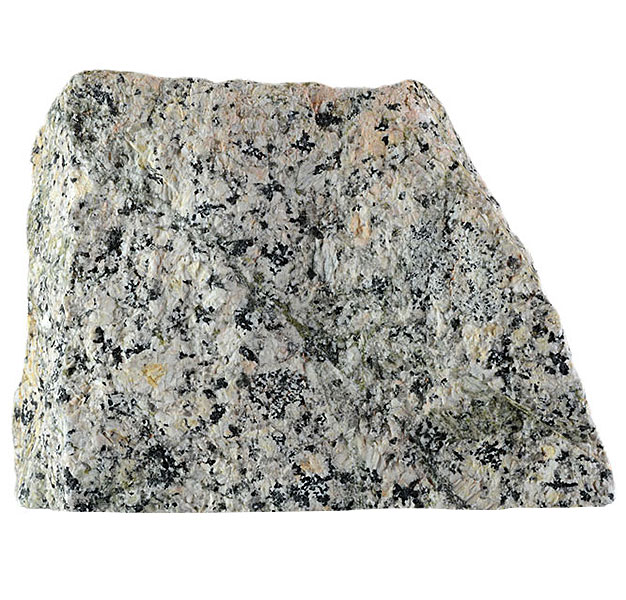
Fact sheet
The Isle of Ailsa Craig lies in the Firth of Clyde, Scotland. It is the plug of an ancient volcano, formed during the Paleogene period during the eruption of the North Atlantic volcanic province. Ailsa Craig is composed almost entirely of one rock type: a homogeneous fine-grained microgranite that has made Ailsa Craig famous as a source of curling stones. The stones from this island came to prominence in the early 1800s when it was recognised that the very hard, fine-grained microgranite has a texture that resists fracture and water absorption, making it ideal for curling stones.
In thin section the sample is very fine-grained for a rock characterised as a granite. The thin section contains small grains of riebeckite (a blue-green amphibole) and arfvedsonite (a blue-green amphibole). Both minerals are abundant and visible in the thin section but the grains are too small to allow the user to recognise the key discriminating indicator of cleavage angle. The rock also contains quartz, plagioclase and orthoclase feldspar.
The United Kingdom Virtual Microscope (UKVM) collection consists of igneous, sedimentary and metamorphic rocks from around the UK.
It is intended as a teaching resource, helping to tell the story of the common rock types and how they form, and reflecting the history of the UK at the margins of the continent of Europe. The collection is a series of teaching sets, for example igneous rocks from the North Atlantic Igneous Province and SW England; high-temperature metamorphic rocks from Scotland and low-temperature metamorphic rocks from Wales; and sedimentary rocks, including English limestones and sandstones.













